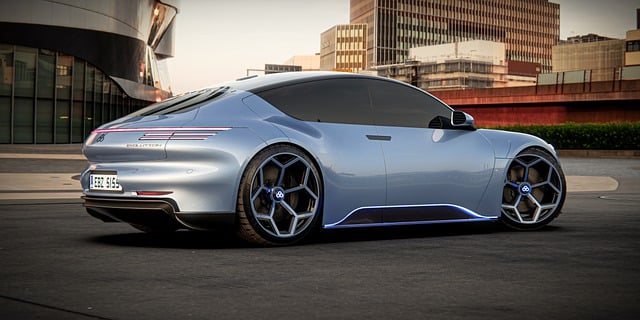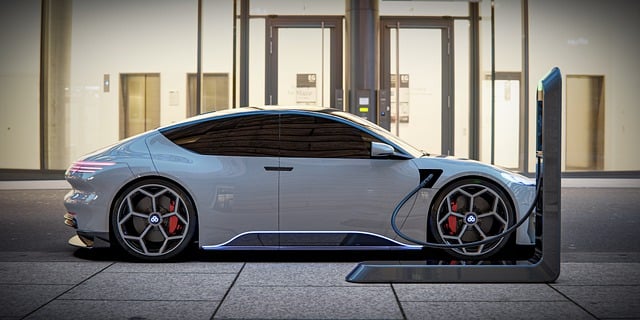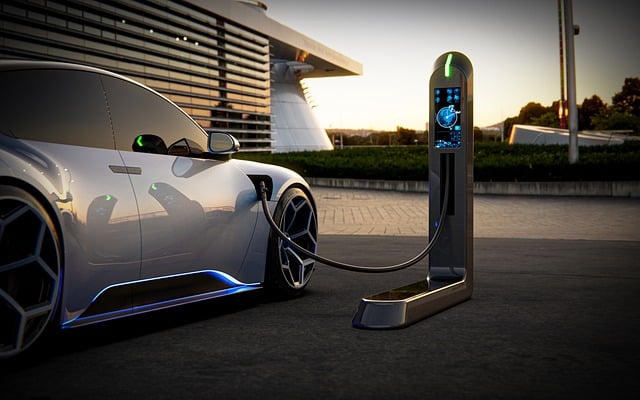Given the current climate of rapid technical progress and increasing environmental awareness, hybrid and electric automobiles have become very attractive substitutes for conventional internal combustion engine vehicles. These environmentally friendly cars are becoming more and more popular among buyers all over the globe because to their promises of lower emissions, more fuel economy, and higher performance. Owning an electric or hybrid vehicle does, however, come with a unique set of maintenance requirements and difficulties, just like any new technology. We’ll go into the mechanics of hybrid and electric car maintenance in this post, giving owners the know-how they need to ensure years of trouble-free driving.

Recognizing the Fundamentals: How Electric and Hybrid Vehicles Are Different from Conventional Vehicles
It’s important to comprehend the key distinctions between conventional, electric, and hybrid cars before diving into maintenance advice and best practices. Hybrid cars may run on electricity, gasoline, or a mix of the two by combining a traditional internal combustion engine with an electric motor and battery pack. On the other hand, rechargeable batteries are the only source of electricity for electric vehicles (EVs).
Maintenance Points to Remember with Hybrid Cars
Because of their unusual engine, hybrid cars need specific maintenance to guarantee long-term and optimum performance. The following are some essential upkeep factors for owners of hybrid vehicles:
Battery Health: Powering the electric motor and enabling regenerative braking, the battery pack is an essential part of a hybrid car. To keep track of the charge level, voltage levels, and general performance of batteries, routine diagnostics and health checks are crucial. Hybrid battery owners should be ready for the possibility of having to replace their batteries at some point, even if they are meant to last for many years.
Maintenance of the Brake System: Regenerative braking is a technique used by hybrid cars to recover energy during braking and refuel the battery pack. Because of this, brake rotors and pads could wear out less than on regular cars. Nonetheless, to guarantee appropriate operation and safety, it’s still essential to routinely test and repair the braking system.
Engine Maintenance: Even though hybrid cars use a lot of electric power, they yet have an internal combustion engine that has to be serviced on a regular basis. The engine must need regular tune-ups, filter replacements, and oil changes in order to operate properly.
Power electronics and the inverter: In a hybrid car, these components are essential for transforming DC power from the battery pack into AC power for the electric motor. To find and fix any problems quickly, these components need to undergo routine diagnostics and inspections.
Requirements for Electric Vehicle Maintenance
When comparing electric cars (EVs) to conventional internal combustion engine vehicles, EVs have fewer moving parts and need less maintenance. However, EV owners should still give priority to the following crucial maintenance tasks:
Battery management: An electric vehicle’s battery pack, which supplies the energy required to run the electric motor, is its heart. EV users should prevent deep discharges, maintain the battery within its ideal temperature range, and follow the manufacturer’s recommendations for charging procedures in order to extend battery life and preserve optimum performance.
Infrastructure for Charging: Whether at home, at work, or at public charging stations, EV owners should make sure they have access to dependable infrastructure for charging their vehicles. To avoid problems and guarantee secure and effective charging, charging cables, connections, and stations must be routinely inspected and maintained.

Tire Care: To maintain performance and safety, EVs need to have their tires maintained on a regular basis, much like standard cars. Important elements that might impact range, handling, and efficiency include proper tire inflation, tread depth, and alignment.
Maintenance of the HVAC System: The range and performance of an electric vehicle’s battery might be affected by the HVAC system. To maintain efficiency and comfort, the HVAC system has to be maintained on a regular basis. This includes checking the refrigerant and replacing the cabin air filter.
Sailing Towards the Future: The Prospects of Intelligent Maintenance Technologies
The equipment and technology for maintaining hybrid and electric cars also keep up with their evolution. For both owners and professionals, the future of hybrid and electric vehicle maintenance offers exciting possibilities, including wireless firmware upgrades, improved diagnostic software, and remote monitoring capabilities. The performance, dependability, and sustainability of hybrid and electric car owners may be preserved for many years to come by adopting these advances and remaining up to date on the most recent advancements.
Conclusion: Taking the Right Route to Become an Expert in Hybrid and Electric Vehicle Maintenance
There are several advantages to owning a hybrid or electric vehicle, including lower fuel expenses, pollutants, and quieter, more enjoyable driving. To maintain these cars in optimal condition, owners must be aware of the special maintenance needs they have and take preventative measures. Owners of hybrid and electric cars may traverse the route to maintenance mastery and continue to reap the advantages of their environmentally friendly vehicles for many years to come by adhering to manufacturer guidelines, keeping an eye on the condition of their batteries, and adopting new maintenance technology.
Common Issues Addressed: Troubleshooting Advice for Owners of Electric and Hybrid Vehicles
Even though hybrid and electric automobiles have several benefits over conventional vehicles, owners may have certain maintenance and operation-related issues to deal with. The following typical issues are covered, along with some troubleshooting advice:
Owners of electric vehicles often worry about range anxiety, or the dread of running out of battery power before arriving at a charging station. Plan your travels carefully, make use of the infrastructure for charging that is available, and get acquainted with the range and charging choices of your vehicle in order to reduce range anxiety. In addition, think about getting a portable charging cable or keeping extra charging adapters on hand in case of need.
Infrastructure for Charging: The adoption of electric vehicles may be hampered by a lack of infrastructure for charging. In order to solve this issue, promote more funding for the infrastructure of public charging stations and look at other charging choices such workplace charging, community charging cooperatives, or home charging systems. For even quicker and more convenient charging, think about setting up a Level 2 charging station at home.
Battery degradation: High mileage, frequent quick charging, and severe temperatures may all cause an electric vehicle’s battery to lose capacity and efficiency over time. When it comes to battery deterioration mitigation, steer clear of very hot or cold environments, utilize moderate charging rates, and follow the manufacturer’s instructions for battery care and charging procedures. Additionally, if you see noticeable drops in performance or range, think about speaking with a trained mechanic or battery expert.
High Maintenance bills: Although the upkeep of electric cars is usually less expensive than that of conventional automobiles, some owners may still be worried about future repair bills, especially when it comes to battery-related problems. Consider getting an extended warranty or maintenance plan that includes replacement of the battery and other essential components to save maintenance expenses. To avoid future expensive repairs, be proactive with basic maintenance chores like tire rotations, brake inspections, and fluid checks.

Cold Weather Performance: Due to reasons like higher battery resistance and energy expenditure for heating, electric cars may have a lower range and performance in cold weather. Use seat warmers and steering wheel warmers instead of cabin heating whenever possible, preheat your car while it’s plugged in to reduce battery energy consumption, and think about getting an insulated charging cable or thermal battery management system to keep your battery at a consistent temperature while it charges.
Looking Ahead: Predicting Problems and Solutions for Upcoming Maintenance
Owners of hybrid and electric vehicles should anticipate additional maintenance possibilities and problems as these vehicles’ technologies advance. Here are some trends to look out for in the future:
Advanced Diagnostic Tools: As the use of electric vehicles increases, sophisticated software and diagnostic tools tailored to the particular maintenance requirements of hybrid and electric cars should be developed. To expedite maintenance procedures and reduce downtime, these solutions could include remote diagnostics, predictive analytics, and real-time monitoring.
Battery Recycling and Repurposing: In order to handle end-of-life batteries responsibly, there will be a rising need for battery recycling and repurposing solutions as electric cars become more and more common. Keep an eye out for developments in battery recycling technology and programs to recycle old electric car batteries for energy storage uses including grid stability and integration with renewable energy sources.
Wireless Firmware upgrades: Expect a broad rollout of wireless firmware upgrades for electric and hybrid cars as vehicle connection advances. With the help of these over-the-air upgrades, automakers will be able to remotely install new features, performance improvements, and software fixes on cars, saving on in-person maintenance visits and improving consumer satisfaction.
Autonomous Maintenance Solutions: With the development of autonomous vehicle technology, robots, artificial intelligence, and predictive analytics may be used to carry out normal maintenance operations on electric and hybrid cars automatically. These may include self-diagnosing systems, automated maintenance fleets that run without human interaction, and robotic charging stations.
Hybrid and electric car owners have special possibilities and difficulties, but with the correct information and tools, they can confidently travel the future. For years to come, owners of hybrid and electric cars may enjoy the numerous advantages of driving an environmentally friendly vehicle, overcome challenges, and enhance performance by keeping up with common issues, troubleshooting techniques, and future maintenance trends.